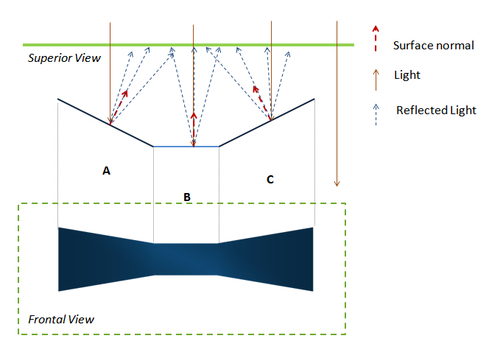Let's see in practice how we integrate our ESSL program to our WebGL code by working on a simple example from scratch.
We have a wall composed of the sections A, B, and C. Imagine that you are facing section B (as shown in the following diagram) and that you have a flashlight on your hand (Frontal View). Intuitively section A and section C will be darker than section B. This fact can be modeled by starting at the color of the center of section B and darkening the color of the surrounding pixels as we move away from the center.

Let's summarize here the code that we need to write:
Write the ESSL program. Code the ESSL vertex and fragment shaders. We know how to do this already. For the wall, we are going to select Goraud shading with a Diffuse/Lambertian reflection model.
Write the
initProgramfunction. We already saw how to do this. We need to make sure that we map all the attributes and uniforms that we had defined in the ESSL code. Including the normals...



